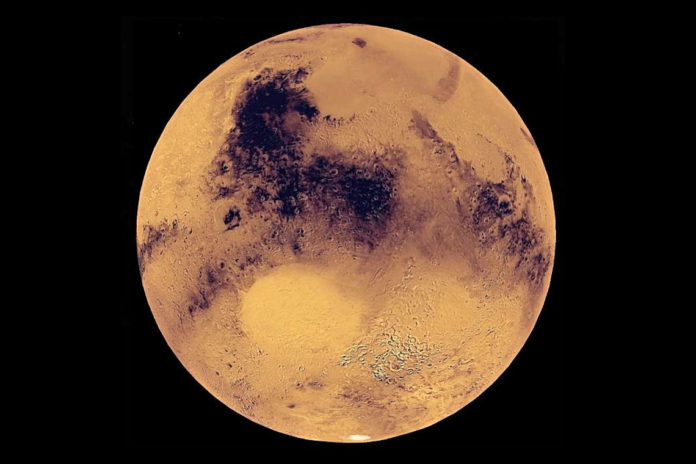Mars is the fourth planet from the sun. It is one of four rocky planets in the solar system. Mercury, Venus and the Earth are the other three rocky planets. Named after the god of war, the planet has been very popular in science fiction. A Martian invasion of earth is a common theme in science fiction.
Mars is also known as the Red Planet and has two satellites. There is evidence that large amounts of water once existed on the planet. Nevertheless, no forms of life have been discovered on the planet.
Surface of Mars
Geologic Activity: Mars is not geologically active today. However, the planet’s surface did experience volcanic activity in its past. Large lava plains and shield volcanoes can be found on the planet’s surface. Olympus Mons is the second tallest mountain on Mars, but the largest shield volcano in the solar system.
Polar Ice Caps: The planet has two polar ice caps made up of water in the form of ice. However, part of the ice caps is frozen carbon dioxide. During the winter, carbon dioxide freezes into dry ice at the poles. When summer comes, the carbon dioxide returns to its gas form. This results in the seasonal growth and shrinking of the ice caps.
Atmosphere: The atmosphere of the Red Planet is made up of carbon dioxide (96%), nitrogen (2%), and other gases. The atmosphere is very active. The planet has the largest dust storms in the solar system. The largest of these storms can cover the entire planet
Life on Mars
Scientists are still debating whether or not life exists on Mars. The planet probably had oceans in its past. These oceans would have been suitable places for life to develop. There is evidence that liquid water exists underground and could support life. However, scientists are still searching for life on the planet.
Facts About Mars
| PROPERTIES | MEASUREMENTS |
|---|---|
| Distance from the sun | 249 million kilometers (aphelion), 207 million kilometers (perihelion). |
| Size | radius of 3.4 thousand kilometers. |
| Mass | 11% of the earth. |
| Gravity | 38% of the earth. |
| Satellites | two (Phobos and Deimos). |
| Rotation | 24.5 hours (length of a day). |
| Revolution | 687 days (time to orbit the sun). |
| Surface Temperatures | 130-300 °K. |
Reflections
Vocabulary
Notes
- Mars is the fourth planet from the sun.
- It is a terrestrial planet with little geologic activity today.
- The surface of Mars experiences huge dust storms throughout its year.

